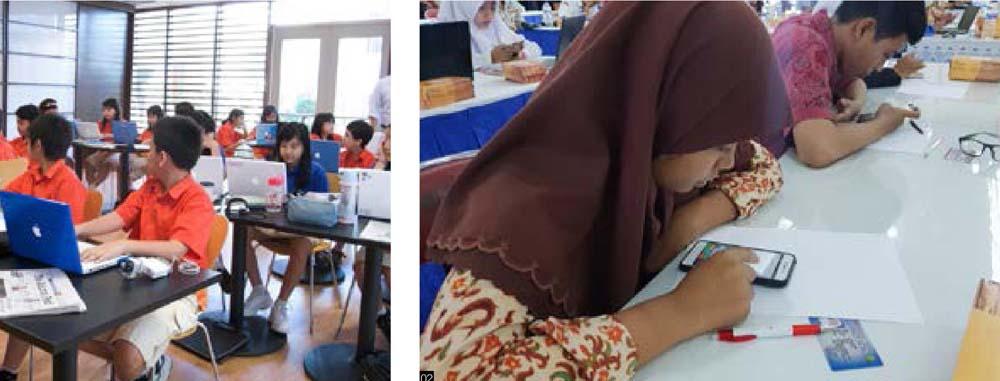Educational Technology Needs Careful Implementation to Be Effective
2020-03-23RossHope
Ross Hope

With the recent appointment of Nadiem Makarim as new education and culture minister, all eyes will be on how he leverages his incredible success with Go-Jek into the rapidly expanding nexus of education and technology. By creating Southeast Asias leading on-demand, multi-service, and digital payment platform, Nadiem has proven his ability to integrate innovative technology and shown his willingness to take calculated risks on a grand scale. Does Nadiems appointment mean that technology must become a big part of the ecosystem of education?
No doubt technology is a powerful educational tool, and introducing new technology into classrooms provides diverse opportunities for learning. However if investment in education technologies — such as tablets, laptops and smartphones — is going to be fruitful, it requires an equal investment in other educational cornerstones: research- and data-led programs, and teacher upskilling. Here, though, “investing equally” doesnt have to mean spending the same amount of money: it means valuing these elements as much as technology.
Access to the latest technology in the classroom is essential for teachers and students today. Although mobile devices and tablets have incredible power and capability, such technologies need to be harnessed with the right programs; the right teaching methods; the right digital applications; and the right non-digital classroom activities to reinforce learning. In essence, education technologies are only as good as the people, programs and platforms that guide their use. Consequently, making appropriate use of the technology then becomes part of the job to design pedagogically sound solutions that meet the needs of educational outcomes which, in turn, enact the vision of the Indonesian government.
As teachers in Indonesia try to prepare todays school children for an unpredictable future job market, President Joko Widodos emphasis on “link and match” has become paramount in education. The need to link what we are teaching children in school to what is happening in the real world, and matching that learning to what might be needed for future employment will undoubtedly involve the integration of new technology.
However, technology, which is continually changing, will also need strong programs and adaptable frameworks, as well as appropriately skilled and empowered educators, to ensure that our children are ready for anything that the future may bring.
To this end, Indonesia needs to move forward in its education-techology journey by learning from the sound practices, empirical research, and mistakes of its neighbors, and using those experiences as a catalyst to “leapfrog” ahead to improved outcomes by 2045. With millions of new digital devices being distributed to schools across the country, the hope is that combining this nation-wide rollout of educational technology with Nadiems expertise will prompt the “frog to make the leap”, so to speak.
However, the question remains: how exactly will these new digital devices lead to improvement in educational standards? The answer lies not in the specifications of the devices themselves, but in what else the government does to fully utilize the immense capability of the technology and empower teachers to be confident in how they use them.
At the STEM Education Research Centre (SERC), at the University of Canberra in Australia, we have been running various educational projects in Australia and Indonesia that involve children, educators, and families. Led by Centenary Professor Tom Lowries decades of research and industry experience in the education field, the SERC team has showcased the power of technology and the significant impacts of empowering professional development opportunities for classroom teachers and educational leaders in an era of heightened accountability and change. The SERC team has demonstrated technologys reliance on research-led, data-driven, educational programs to be effective in improving learning outcomes.
The biggest lesson we have learned from our digital technology projects is that to be successful, you cant rely on the development of impressive digital apps or educators having the latest tablet devices. Equal attention must be paid to educator professional development and digital literacy, research findings from the education sector, and the foundational framework of the program itself. As such, our digital technology frameworks stipulate the importance of children and students moving off apps and engaging in real-world activities in their classroom for the programs to be effective. This has been vital — not just to reduce screen time and childrens reliance on digital devices, but to help them apply what they have just learned on the apps in a context that is more familiar to them.
To reinforce and scaffold childrens digital learning experiences, an “Off-On-Off” technology framework has been implemented. Children begin learning about a particular STEM concept by using real objects in their classroom or outside in nature. Then, once the children have engaged in the activity, they move “on” to the digital device and engage in an app activity. Lastly, children then move “off” the app and engage in another real-world activity based on the same core STEM concept. They have opportunities to engage in authentic, active, meaningful learning challenges.
Rather than focus on the traditional discipline-specific approach to STEM (and the belief that STEM can only be seen as four separate entities called science, technology, engineering and mathematics), the SERC team have grounded their digital technology research in broader “STEM practices”. This concept includes STEM ideas (such as problem posing, finding and validating of evidence, exploring and challenging); STEM methods (processing information, using tools to produce artefacts, and thinking critically); and STEM values (such as curiosity, creativity, teamwork).
Digital learning will never replace good teaching and well-designed curricula. However, effective digital platforms provide many affordances that encourage learning and life skills important for a productive 21st century modernized workforce. Indonesia has the potential, through creative and entrepreneurial thinking (which Nadiem may offer), to design and deliver better social outcomes through research-backed quality education for all.
· Source: The Jakarta Post
